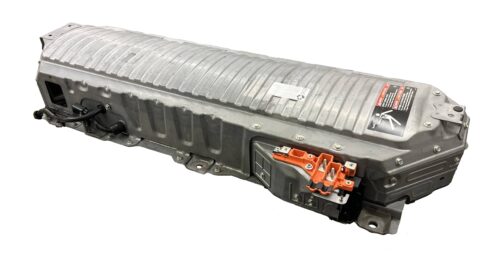Cadillac Escalade Hybrid Battery: Service Considerations and System Behavior
The Cadillac Escalade Hybrid fills a specific niche in the hybrid market as a full-size luxury SUV equipped with a high-voltage battery and dual-mode hybrid drivetrain. Owners must understand how this battery operates and ages to maintain performance and avoid costly drivetrain issues. Our service center, specializing in hybrid battery diagnostics and replacement, observes that Escalade battery issues follow predictable patterns influenced by age, thermal history, and driving conditions.
Battery Design and Configuration
The hybrid Escalade, produced mainly between 2009 and 2013, uses a 300-volt nickel-metal hydride (NiMH) battery pack. Unlike modern lithium-ion systems, NiMH packs weigh more and have lower energy density but offer excellent thermal stability. The Escalade’s pack mounts beneath the second-row seating and connects to the hybrid transmission system through a dedicated control unit. Although the battery does not directly drive the wheels, it supports significant torque through twin 60kW electric motors integrated into the transmission housing.
Battery Degradation Patterns
Technically, battery degradation in the Escalade usually shows as module imbalance. The pack consists of 40 cells arranged into 10 modules. Over time, environmental stress—especially sustained high temperatures and shallow charge-discharge cycles—causes individual modules to vary in voltage and internal resistance. This variation can trigger diagnostic trouble codes (DTCs) like P0A80 (“Replace Hybrid Battery Pack”) or reduce the vehicle’s ability to enter electric assist mode.
Repair Approaches and Challenges
At our facility, technicians often find Escalades with uneven voltage across modules, with two or three showing significant voltage sag under load. While full-pack replacement remains an option, many cases resolve through targeted module replacement and voltage rebalancing. This approach works when the rest of the system—including cooling fans, control logic, and power electronics—functions properly.
One challenge with Escalade hybrids is sourcing reliable replacement modules. OEM packs no longer come from active production, so high-quality refurbished or aftermarket modules become the default choice. Our shop uses only tested, capacity-matched modules, balancing them in controlled conditions before installation. Often, partial rebuilds restore functionality for several more years.
Longevity and Early Warning Signs
Escalade owners often ask about battery longevity. Many are surprised to learn that NiMH chemistry can last over 10 years if properly thermally regulated and not over-cycled. However, early detection remains critical. Signs such as reduced fuel economy, less electric assist at low speeds, or frequent fan noise indicate imbalance and require immediate diagnostic testing.
Conclusion
The Escalade Hybrid is a rare example of large-format hybrid integration in a luxury SUV. Although dealers no longer routinely replace batteries, specialized service centers can still provide sustainable and cost-effective solutions to extend vehicle lifespan without compromising system safety.

